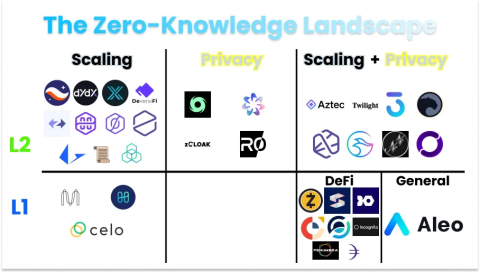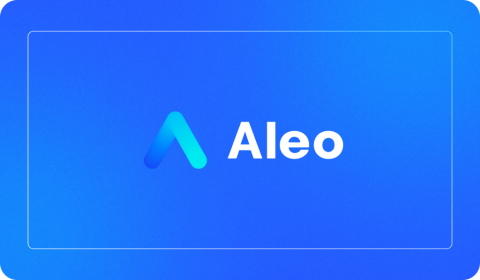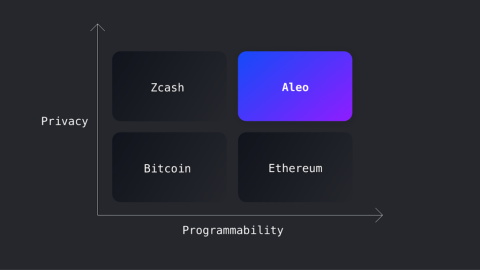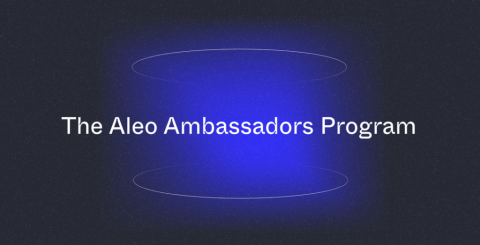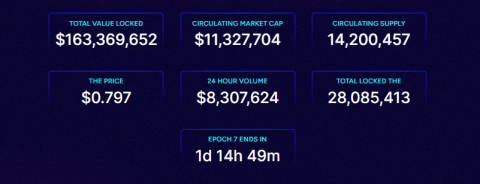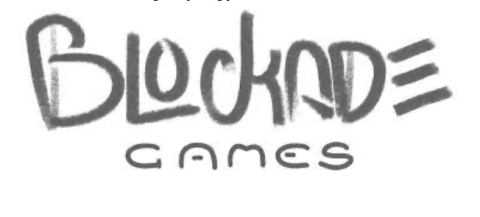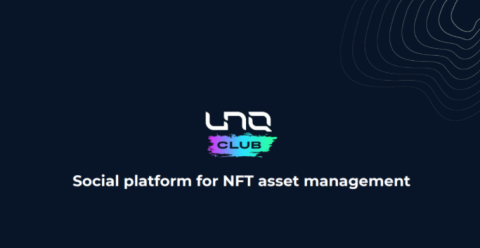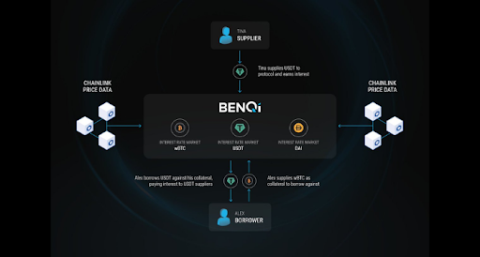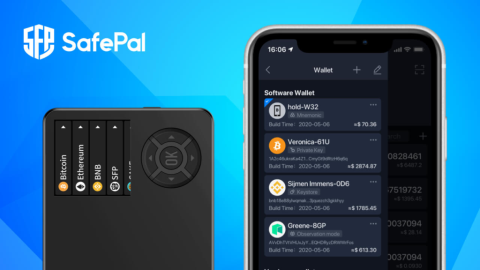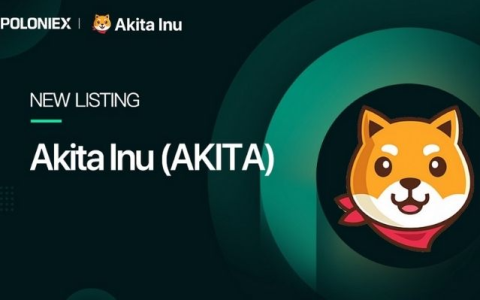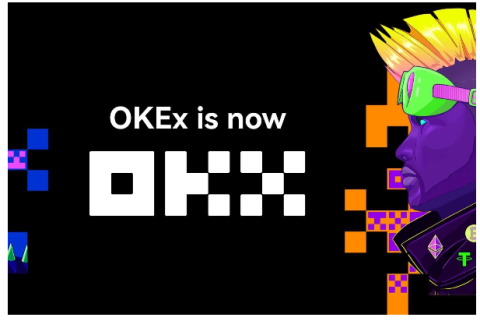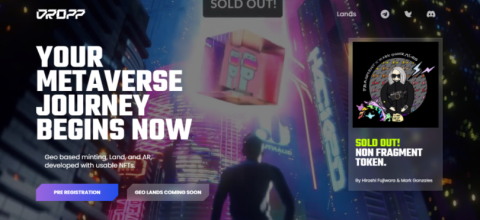Aleos current situation update amid market recovery
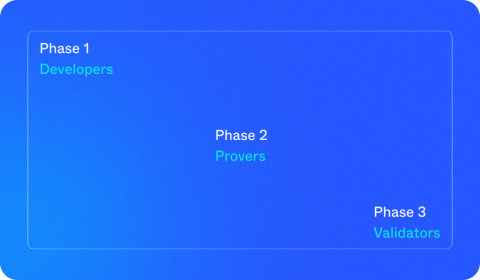
Continuing the series of articles about Aleo, this article will help you summarize its operation in the early days of 2023.
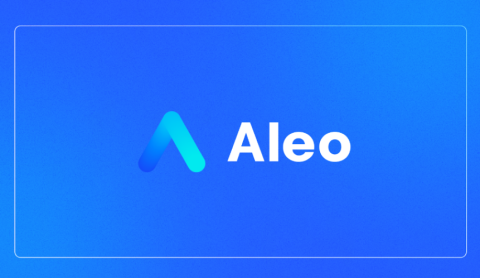
Aleo is a Layer 1 blockchain that uses Zero-Knowledge Proofs technology to allow developers to build private applications on top of this network. Developers see blockchains using Zero-Knowledge Proofs as the third wave. First there was Bitcoin, then there was Ethereum and now there is Aleo.
In the previous article, we have had an overview of the Aleo project , in this article, we will learn together in detail how Aleo works.
As we all know, Aleo is a typical privacy public blockchain using Zero-Knowledge Proofs technology – this is a type of cryptographic protocol that allows one party (Provenor) to prove to another party (Verifier) that they know a certain piece of information without disclosing any information about the actual content of that information.
ZKP is a way to prove that you know something, own something, or have done something without disclosing any information about it. As people are being engulfed by the remnants of the FTX exchange's liquidity crisis, Zero-Knowledge Proofs is a bright spot. This is a useful tool, specifically designed to help avoid the kind of fraud that FTX causes.
For blockchains specifically, ZKP has two useful uses: scalability and privacy.
Taken together, ZKP allows blockchains to approach the performance of centralized services and exceed their security and privacy capabilities, while maintaining the benefits of decentralization.
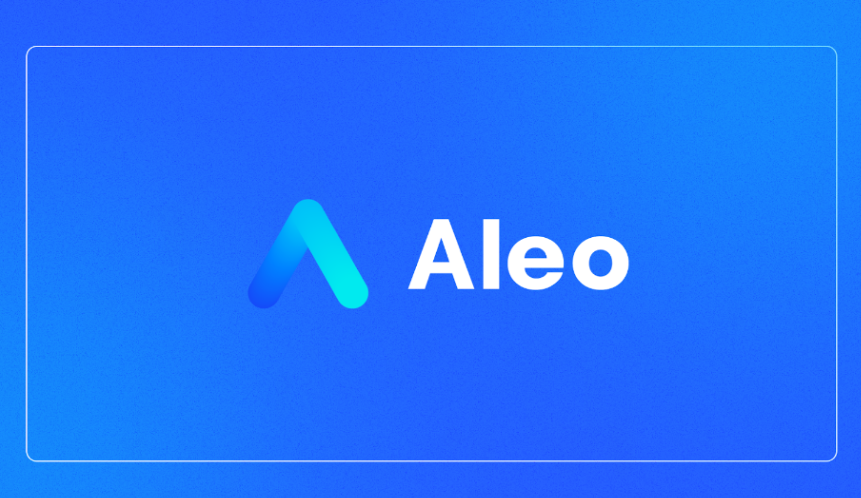
Aleo was originally conceived as an L2 on Ethereum, but ZKP on Ethereum is larger – they have to use the entire state of the application, and Ethereum does not support SNARK-friendly primitives (hash functions and elliptic curves. So Aleo team rewrote the plan and decided to build their own L1 to provide cheaper ZKP.
Aleo is taking the most radical approach to building a blockchain based on ZKP from the ground up. Instead of building an EVM-compatible chain so developers could build apps using the familiar Solidity programming language, it created its own virtual machine, snarkVM, and the Leo programming language. Instead of relying on existing consensus mechanisms like Proof of Work (PoW) or Proof of Stake (PoS), it uses a combination of the two, with a useful tweak on PoW called Proof of Succinct Work. As a result, ZKPs on Aleo are much cheaper than on Ethereum.
Aleo is a decentralized platform that uses its blockchain to verify and store proofs, which are efficient Zexe transactions. It uses a Bitcoin-like architecture, with a ledger and a record, or a UTXO (unused transaction output) model, where the input specifies the address where the asset came from and the output specifies the address. only to which the content is sent, with a value representing the amount of assets sent. Aleo's consensus algorithm is the same as Proof of Work, with a few key differences. That's largely where the comparisons end and where a host of new content created by Aleo emerges.
How Aleo works will revolve around three main parts:
A typical programmable blockchain, like Ethereum, works by executing programs on a chain of virtual machines that must be run by every node in the network. If you have heard of “EVM” or “EVM compatible”, that is the virtual machine of Ethereum.
One of Aleo's biggest differentiators is that zkCloud splits it into two parts: snarkVM is a virtual machine that runs applications off-chain and sends protected transactions to the Aleo blockchain, snarkOS. In cryptographic terms, it separates execution (snarkVM) from state (snarkOS).
There is an important difference between Zexe and Aleo is that Zexe allows both data privacy and functional privacy, whereas Aleo has data privacy but no functional privacy.
On Aleo, you can't see the input and output of the program or the sender and recipient of the credit, but you can see which program has been interacted with. While the Aleo team devised a way to ensure functional privacy from the start, the team felt that focusing on data privacy was the right trade-off for Aleo for the sake of removing privacy. of functionality that improves performance while benefiting developers with tools to protect privacy.
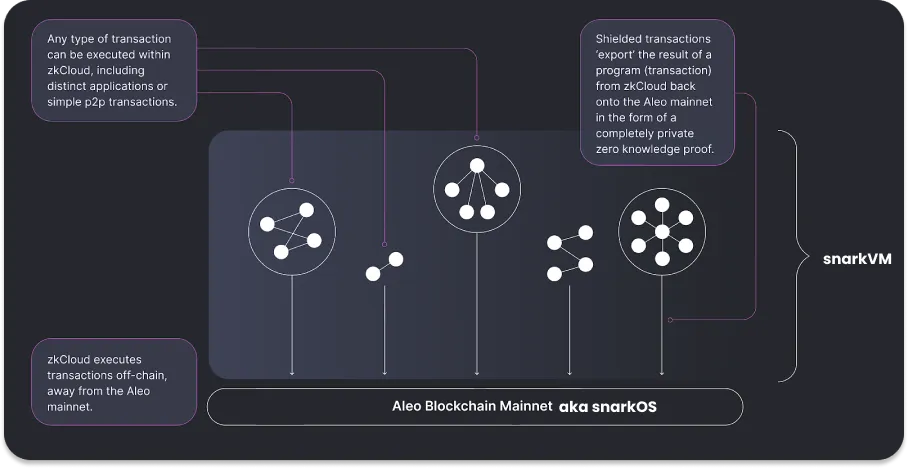
In his blog post, Alex likened the relationship between snarkVM and snarkOS to “shadow objects: When you see a shadow, you know that something created the shadow, but very It's hard to figure out the details or pinpoint what it is."
Programs running off-chain in snarkVM can run for any length of time. If you want, you can run a program that calculates from pi to trillions of digits over the course of many months as long as eventually a protected transaction is sent to snarkOS.
In addition, this architecture provides a few more key benefits:
This architecture allows Aleo to come close to breaking the impossible trinity of scalability – it allows Aleo to be decentralized, scalable, and secure – with added privacy to have The best solution.
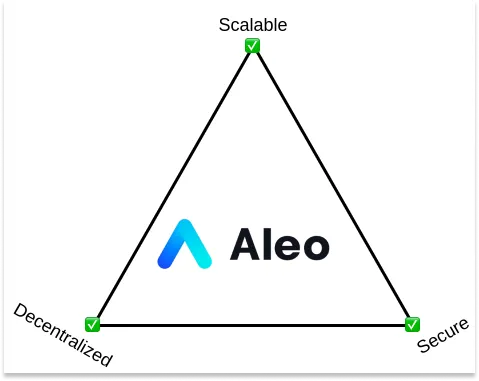
Aleo's goal is for casual Web developers to be able to write private applications without having to think about low-level cryptography. The most popular languages in coding, Solidity and Rust, don't work perfectly for ZKP, and these technology-specific languages are all math-based. To use them, the Aleo team explains that “you need to know a lot of advanced math.”
To build a ZKP, you need a proof system (in Aleo's case, SNARK and more specifically MARLIN SNARK) and a ZK circuit. Just as the circuits in your computer have NAND gates that take 0s and 1s as inputs and outputs, ZK circuits use add and multiply gates that take the numbers “0 to p” as inputs and outputs . Creating a ZK circuit means putting all those gates together manually.
Aleo surveyed the landscape of domain-specific languages (DSLs) and came across ZoKrates. Aleo changed the syntax and developed it to create his own programming language called Leo.
Leo is built to look and feel more like JavaScript, the world's most popular programming language, than Assembly. If ZKP penetrates the fabric of the Internet, it becomes extremely easy for developers who are not familiar with ZK to incorporate ZKP.
Basically, this language is very complex, abstracting circuit programming and other low-level concepts. Therefore, it is easier for developers to build private applications.
It receives the code as shown below:
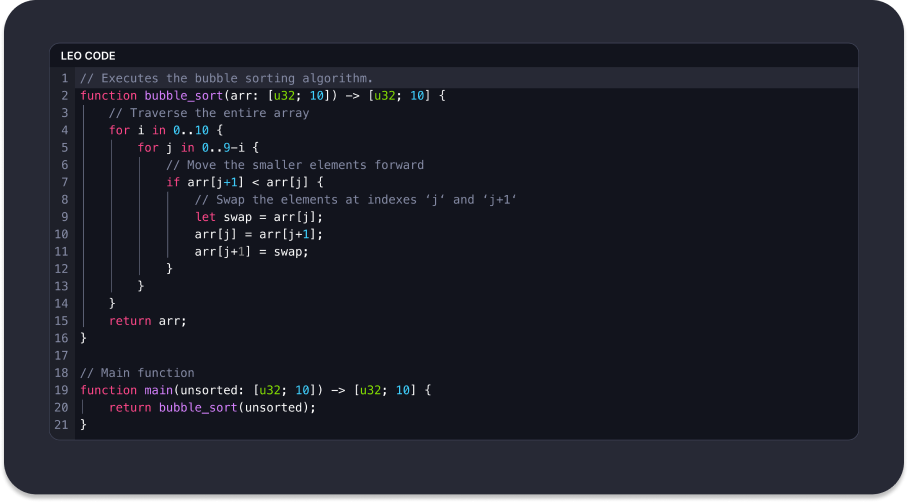
Aleo takes the code and presents proof that you ran your computation correctly, this proof can be sent from snarkVM to snarkOS for verification by nodes.
In addition to this language, Aleo also develops a range of other tools to make it easier for developers, including a testing framework and a package manager. They wrap it all up in Aleo Studio – the first IDE (integrated developer environment) for Zero-Knowledge Proofs.”
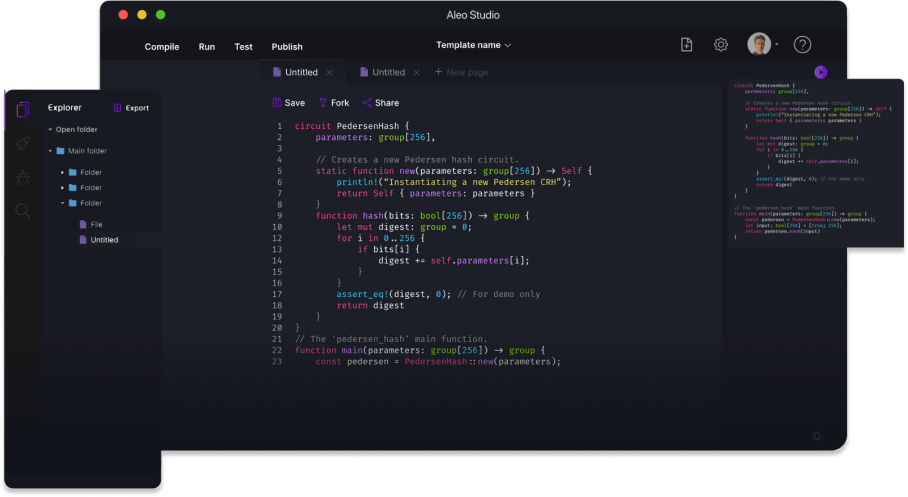
AleoBFT combines Proof of Stake (PoS) and a type of Proof of Work (PoW) – specifically called Proof of Succinct Work (which itself is a subset of Proof of Necessary Work).
We will go into the details of this section in another post. Basically AleoBFT is designed to do three things: secure the protocol, ensure that there are enough experienced validators to serve the application's zkSNARK needs, more incentive, prove efficient and cheap than.
Above is how Aleo works – a Layer 1 blockchain project using ZKP. Among public blockchains, ZKP mining can be accepted by any L2 of the ZK chain, but L1 is currently only allowed by Aleo. In contrast, Aleo does not require parallel computation, so idle GPU miners can be docked seamlessly. In the following article, we will continue to dig deeper into AleoBFT.
Continuing the series of articles about Aleo, this article will help you summarize its operation in the early days of 2023.
In the Zero-Knowledge Proofs segment there are many outstanding projects, so how will Aleo compete against formidable competitors?
AleoBFT consensus algorithm makes Aleo stand out from other Layer 1 blockchain projects in the same segment. In this article, let's learn about AleoBFT.
Layer 1 blockchains are currently an area attracting large investors. In this article, we will learn about Aleo - the project that is receiving a lot of attention recently.
In this article, let's take a look at the 2023 journey that Aleo - a public secure blockchain platform - has gone through with the TraderH4 team.
Ngoài PancakeSwap, hệ sinh thái BNB Chain còn có một AMM khác có TVL đạt 150 triệu USD chỉ sau hai tháng ra mắt, dự án này được gọi là Thena.
Blockade Games provides a platform that allows developers to create blockchain games. In addition, Blockade Games also creates many interesting free games.
UNQ Club is a project that provides a blockchain platform that allows investors to collect and manage existing NFT assets.
BENQI is one of the important pieces of the Avalanche ecosystem. Join TraderH4 to find out what BENQI (QI) is as well as detailed information about the QI token.
In addition to a cryptocurrency storage wallet, SafePal is also known to many investors for its SFP tokens and airdrop events with attractive rewards.
The fever from Akita Inu in the Crypto market in the past time has created a great buzz along with the rapid development of the "dog house token".
What is IoTeX? This is a blockchain built and developed in conjunction with the Internet of Things (IoT). Join TraderH4 to learn this article.
What is OKB? OKB is an exchange coin of OKX and the OKX Chain blockchain. Let's learn about OKX and OKB exchanges with TraderH4 in this article.
DROPP GG brings an innovative and novel idea to provide an NFT mint platform based on geographies outside of the real world.
CronaSwap is a DEX built on Cronos Chain, which has a similar model to Uniswap.
